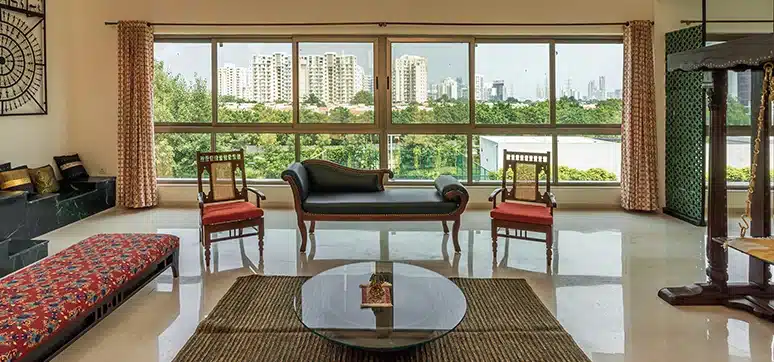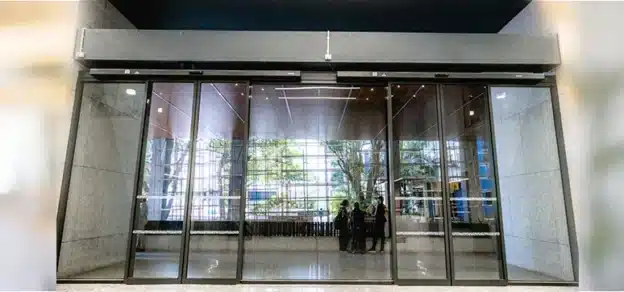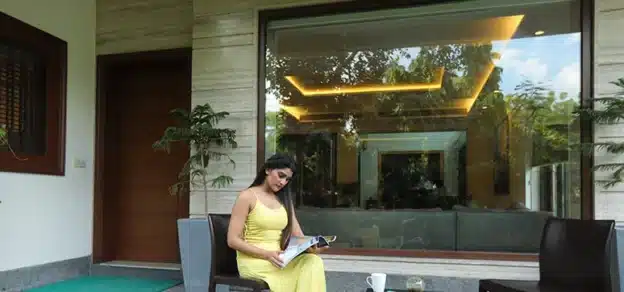Efficient buildings are designed to provide occupants with a comfortable, safe, and healthy living and work environment. This requires superior architecture and engineering designs, quality construction practices, and intelligent operation of the structures. According to a study in the USA, the major areas of energy consumption in buildings are heating, ventilation, and air conditioning—35% of total building energy and lighting consumes —11%. Façade and fenestration is often considered the biggest hurdle in achieving higher levels of energy efficiency in buildings. Building owners opt for the most efficient façade and fenestration system which contributes to energy conservation, thereby operational costs.
This edition cover story on “Effective Fenestration Through Improved Designs & Systems” discusses key factors such as characteristics and main features of sustainable and efficient façades and fenestration, ideal wall-window ratio, and improved acoustics and thermal comfort through proper design and installation of fenestration. It also throws light on the ways to conserve energy using various design tools for designing efficient and optimal fenestration, and on most effective glazing.
Team WFM spoke to many experts on the said topics. The cove story is a fine compilation of their views and thoughts on the topics, and on the future of fenestration technologies.
What Is Meant By A Sustainable And Efficient Fenestration?

If the façade is performing to the parameters it has been set up to, then it is sustainable, states Ar. Ajay Gupta, Founder, Knowledge Squirrel. The parameters should be a thermal barrier or heat gain, light infiltration and level of ambient light in the internal space, acoustic separation and wind pressure management. “The final goal is less energy consumption for the HVAC or lighting, and comfortable environment inside,” adds Gupta. An efficient fenestration is marked by carbon footprints and their contribution to energy efficiency, says Ar. Abhigyan Neogi, Founder & Principal Architect, Chromed Design Studio. The sustainability factor is associated with the usage of renewable energy, minimised wastage of raw material resources, and a similar life cycle as the façade.

Any advanced fenestration takes into account the amount of energy that could be lost through the building envelope, thus creating a more costeffective and comfortable interior. Ar. Anurag Pashine, Principal Architect at Salankar Pashine & Associates agrees with Ar. Neogi on his views on sustainability and minimum carbon footprint through efficient fenestration, using renewable energy and less wastage of raw material resources.
Talking about aesthetics and comfort, Uma Subbaraman, Director of Marketing and Communication Strategy, Tattva Mittal Group adds – a building is considered attractive by its various features like its exteriors, the gladden interiors, height, design and especially with the texture of the façade. To achieve both comfort and attractive designs, fenestrations play a vital role in the building façade. A building façade is important for both the internal and external beauty of a construction project.
Characteristics And Key Features Of Sustainable Facades And Fenestration:

A sustainable and efficient fenestration is the one that provides psychometric comfort inside a space despite extreme temperature conditions outside, without much intervention of any mechanical cooling or heating systems (Active measures), observes Shweta Kaw, Principal, Studio Meraki. Ideally, an efficient fenestration/façade should be able to balance daylight and heat gain whilst resolving glare issues as well. According to Prasana Kesavan, Director, Studio 7 Architects, sustainable fenestration in the Indian context is the one that allows indirect sunlight to the maximum and cuts direct radiation and thereby helps to maintain the inner temperature at desired levels. Also, a real sustainable façade should be easy to maintain and shall have fewer complications if it is an operable solution.

When we talk about fenestrations in any building, be it commercial, residential, institutional, or offices, the factor that makes it sustainable and efficient is the balance between four important aspects – daylight, glare, solar ingress and ventilation, points out architect Akriti Kapur, Senior Associate, Morphogenesis. Minimising glare, maximising daylight, negating solar ingress, and enabling ventilation is the start point of any façade design, she adds. These parameters play a key role in determining the envelope load of a building that eventually affects the overall energy performance index.
“Morphogenesis’ façade design for the Infosys building in Nagpur is one such example”, says Ar. Kapur, “whereby an EPI of 25kwh/Sq m/yr is achieved with zero glare on a 90% day-lit floorplate. These factors became the first principles of design in the project and helped in determining the overall 17m width of the floorplate. This, when combined with optimised orientations, gave rise to an overall Net-zero project,” explains Ar. Kapur.
According to Ar. Shivani Khanna, Partner & Principal Architect, Studio Crypt, sustainable fenestrations must cater to the following:
- Optimum lighting from outside to ensure that the façade is glare-free yet the interiors are well-lit
- Optimum ventilation is another important factor for buildings, specifically in hot and humid climatic regions
- Optimum thermal performance of fenestration is necessary to keep in check the heat gain and heat loss factors

Another feature, purely from an aesthetic point of view is an overall pleasing view from the opening, adds Ar. Debaditya Goswami, Partner & Principal Architect, Studio Crypt. Interior comfort levels within a building come from a derivation of the important aspects mentioned above. Daylight ensures reduced use of artificial lighting, glare ensures elimination of blinds, solar ingress ensures low levels of heat transmission through the façade, and natural ventilation enables fresh air. Together, all these factors help one design a naturally well-lit and blind free façade in sync with the outdoor environment and natural surroundings. Furthermore, it helps the occupants establish physical and psychological comfort levels and eliminates sick building syndrome from long hours of being indoors, elucidates Ar. Kapur.

From the manufacturer’s point of view, Mario Schmidt, Managing Director, Lingel Windows and Doors Technologies Private Ltd. says that the fenestration industry is becoming more and more organised when factory setups offers better reach to all consumers. The need for sustainability of the products are also given greater emphasis. After-sales service, warranty terms are improving people’s lives in taking maintenance troubles away. The fenestration products become more sustainable as the new industry is acknowledged by the government bodies and rules, regulations and standards are put in place. This again helps the consumers to stay better protected and that better quality products are getting supplied and installed.
Aluminium & uPVC Fenestration – Most Sustainable:
“Go for aluminium. While there is no perfect material meeting all the requirements yet, aluminium is a more universally accepted material amongst designers”, says Ar. Neogi and Ar. Pashine. The essential strength of aluminium allows for a much larger glazing expanse within sleeker frames. Aluminium provides for a cost-effective and recyclable option along with giving a commendable thermal performance. With the right awareness of material deficiencies, designers can get better of the fenestration limitations by adapting to the strengths of the chosen material.
Schmidt from Lingel too emphasises that the material used for fenestration should be environmentally friendly. “While using uPVC and aluminum windows we are protecting the national forest resources and having products which can be recycled multiple times. Factory-made doors and windows with a controlled waste and recycle management are getting the entire production waste back to the raw material cycle” adds Schmidt.
uPVC, as a bad conductor of heat is reducing the energy loss of buildings and the proper way of sealing by gaskets and brush seals reduces the air leakages, especially at all the air-conditioned buildings. This helps to reduce the energy consumption of buildings.
The Ideal Window-Wall Ratio

Window to Wall Ratio (WWR) is the fraction of the building’s total glazed area when compared to its exterior wall envelope area. This resultant is important to ascertain the energy performance of a building. “Ideal WWR is 40% to 60%, depending upon the building orientation, observes Ar. Pallavi Pashine, Principal Architects of Salankar Pashine & Associates. It has the power to impact a structure’s heating and cooling environment in terms of access to ventilation and daylight. Using high-performance glazing systems aid in reducing solar gain through large window areas while allowing natural light to enter inside. Ar. Neogi too agrees that WWR is a key feature in assessing the energy performance of a building.
Ideal WWR is 40% to 60%, depending upon the orientation of the building. They have the power to impact a structure’s heating, cooling, and the natural interior environment in terms of access to ventilation, daylight, and visible views. “There needs to be an analysis of windows in different orientations, floors, or with different types of glass as it can have varying effects on solar heat gain. Using high-performance glazing systems aid in providing a higher percentage than the prescribed maximum as these designs can help reduce solar gain through large window areas while still allowing natural light to enter inside”, observes Ar. Neogi.

As accepted by the Bureau of Energy Efficiency, the ideal WWR is between 40% and 60%, agrees Ar. Kapur. The window wall ratio benchmarks are to be taken ‘just’ as guiding principles. They can vary as per the calculative design process, the geographical location, and the building’s orientation. “An ideal example would be a project designed by Morphogenesis in Hyderabad where the north/ northeast façade has an end-toend glazing with 70% window wall ratio, whereas the south/ southwest façade is close to 40% which makes the overall ratio 55%. Additionally, the façade is glare-free with 75% daylight on a 55M wide floorplate making the building 50% more efficient than traditional green buildings”.
According to Ar. Gupta, the concept of WWR is a reaction to the climate type, the building site and the occupancy type the building is designed for, and it ranges from 15% to 25% depending on these factors. According to Kesavan, an ideal wall window ratio shall be 3:1 or 3:1.25, where the window makes upto 25-35% of the overall wall area. These values are important not only for maintaining a desirable natural day light levels and help better ventilation.
Ar. Kaw observes that the WWR for different types of climates has been specified differently. Hot and dry climates have a lower WWR to reduce heat ingress while warm and humid climates have a higher WWR to provide thermal comfort. This can be predetermined using building energy simulation software wherein different case examples of the building models can be studied extensively with regards to the fenestration orientation and sizes to arrive at the best possible combination for energy saving as well as interior comfort levels.

Subbaraman says that the ideal WWR is 25 to 75% respectively to achieve the proper amount of energy flow required. The walls of the window are usually smaller in size, keeping in mind the dimensions of the windows. Research has shown that when the wall to window ratio is increased, the total energy consumption also increases. Most preferable is where the window airflow is from east or west. Also, the appropriate design of windows can surely reduce energy consumption in buildings.
Schmidt says that from the fenestration point there is no real limitation regarding the WWR considering a glasshouse/ conservatory as an ideal example. Important is the energy factor where cantilever and attached balcony can provide a good natural shading or window with inbuilt Venetian blinds and roller shutters.
Also, special laminated glasses with the so-called milky PVB films and the ceramic prints can provide, especially in all the bathroom, the full privacy level as per human comfort. What is important is to choose the glazing system in terms of the energy parameters. The glazing system has equally good heat insulation than the brick walls which would have been used in a traditional construction.
Improving Acoustics Through Proper Design & Installation Of Doors & Windows

There are a variety of tools and design techniques that can enhance the acoustics of the interiors. Apart from soundproofing the walls and floors, we can include soundproofed windows and doors into the design, points out Ar. Neogi, Ar. Kesavan and Ar. Pashine. Doors or Windows can be the best of quality, but the acoustic value is only achieved and can help properly when the door and its frame come together and close with an acoustic seal, same goes for the windows, points out Ar. Gupta.
A window includes two components – the frame and glass. A soundproofed double glazed glass window can be designed to reduce noise levels from outside up to 42 decibels. In a single frame, two layers of laminated glass are fixed together, which helps trap external noise between them. “Double-paned soundproof glass in an airtight framework is the most effective at blocking noise. One needs to ensure that the window frames are fusion welded and double sealed to the glass, making the windows airtight. Along with blocking noise, soundproof windows also improve thermal comfort, provide UV protection, and are easy to maintain,” adds Neogi and Ar. Pashine.
Double glazed windows or doors are highly-efficient for acoustic purposes as they help in preventing sound leakages. Also, ensuring that the fenestration edges are properly sealed minimises the sound leakages creating a proper barrier, necessary between the interior and exterior environment, says Ar. Khanna.

According to Mario, the right glazing system, the right design of the window and door section, the right way of installation avoiding all kinds of open gaps and sealing with PU Foam and foam tapes would provide the best acoustics. “To meet the customer demand, it’s important to understand and to define the actual final noise reduction to be achieved after the window installation measured in decibel. Noise will be your most honest follower as the result of the achieved noise reduction can be immediately measured once the installation is completed”, he adds.
The position and size of the windows also decide the quality of acoustics for that particular space, says Kesavan. A good aluminium system window shall help a lot. He adds that a variety of available PVB membrane types make the glass so special for acoustics. Let’s discuss separately on two fronts. Considering the design of the doors and windows, there are many leakage points or gaps in the door/window systems like the gap between the glass pane and the door/window shutter, the gap between the shutter and the frame, etc.
Good manufacturers, by design, use several interventions to overcome these. One of the interventions is to use small strips of the brush in the section of the door window section or some sort of elastic gasket. Also, EPDM door seals are quite helpful. These can be provided in the system or during the stage of construction,” observes Ar. Kaw.
Coming to the installation part, she adds, the use of epoxy grouts in the junction of the wall and the door/window frame is very important to have a closed tight space. These interventions also help in tackling dust or water ingress as well as better insulation.
Improved Thermal Comfort Through Effective Fenestration
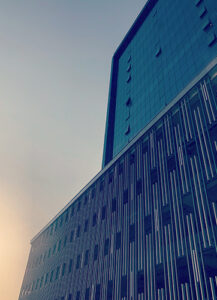
Façade comprises the maximum exposed surface in any building and is a large contributor of heat ingress. More importantly, it is the only element that can help reduce the thermal load in a building as all other factors contributing to it, such as, occupant heat load and heat from electrical devices such as computers and laptops are usually not in a designers’ purview.
Thermal Comfort through fenestration is the key to a sustainable building, the fenestrations need to have the engineering done taking into consideration the sun and wind direction and shadows of the neighbouring building which are cast on it, explains Ar. Gupta. It needs to balance the ambient light infiltration for the building to operate efficiently and also minimise the heat gains in an India like climate. Besides, a second skin, which is called a rain screen, can help the façade on the west and south to minimise the heat gain. The factors considered to reduce solar heat gain include climatic response, building orientation, window size, and glazing, points out Ar. Neogi.
Fenestrations on the south of the buildings are beneficial for giving a cooling and heating effect during summers and winters, respectively. The west and east-facing walls usually receive maximum warmth. The north-facing windows encounter minimum heat transfer, thus more windows are provided on the north and south-facing walls.
The U-factor along with direct solar radiation governs heat gain through fenestrations. Toned Glass includes a tint to the glass to scale back the amount of heat transfer. Reflective coatings are applied to windows as they tend to stop the intake of heat gain while providing privacy inside a house. Low Emittance Glass is usually used during summers as it can absorb and emit out the heat.

Kesavan too agrees that by Choosing the right glass configuration and the right system and profile we can achieve very effective thermal comfort. The U-value varies from system to system and varies for different glass configurations. According to Ar. Kapur, shading solutions such as louvers, fins, light shelves, etc. can be incorporated to reduce the envelope load and direct sun, and help to achieve thermal comfort. “At Morphogenesis, we design to target the envelope load to be less than 1W/Sq ft. Once this target is achieved, there is an overall reduction in Air conditioning demand by approximately 20%. Alternatively, depending on the orientation and wind movement, one could look at rain protected operable windows, double screen façades that naturally ventilate buildings and keep them cool,” she adds.
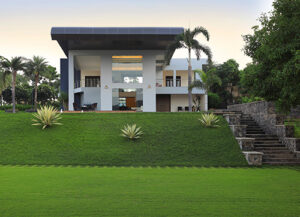
The underbelly of Pearl Academy of Fashion, Jaipur, designed by Morphogenesis, employs earth sheltering, thermal banking and evaporative cooling resulting in a temperature reduction of 18° from the outside; therefore, operable windows and engagement corridors were designed towards the waterbody present in the underbelly. The external façade was designed with double screens, creating a thermal heat buffer and 100% shading to naturally cool the indoors and achieve comfort levels without air conditioning the campus.
Ar. Kaw adds that thermal comfort through effective fenestration can be achieved when the whole space is analysed with proper building energy simulation software. With proper analysis, each component of the fenestration design is derived. Elements like sizes and depth of shading devices, door/ window orientation, wall-window ratio, glass specifications, double/ triple glazing systems, etc. can be properly studied in accordance with the desired results to be achieved in the respective climatic zone whereby reducing the load on active energy systems.

The architectural specification is a very detailed job that has been slowly fading away from the profession. Proper specification of the fenestration only will give actual results. Keeping in mind the environmental factor, avers Subbaraman, a construction project irrespective of residential or commercial has to follow certain environmental ethics that work well for both the building as well as its surroundings.
Achieving Thermal Comfort
There are three ways a designer can achieve thermal comfort through effective fenestrations:

- Appropriate building orientation in accordance with the climate. In the northern hemisphere, the placement of openings on the south and east walls of a building improves thermal comfort and aids in natural ventilation.
- Proper shading of fenestrations & large glazed openings on the wall, either vertical or horizontal, helps block the summer sun and allows the winter sun inside appropriately.
- The thickness of the glazing unit of the fenestration should also be factored in as it affects the thermal performance of the building in a glazed frame design. It is also important for the frames, especially metal frames to have an appropriate thermal-break in their design, this leads to increased efficiency of the fenestration closing component.
(Ar. Shivani Khanna, Partner & Principal Architect, Studio Crypt)
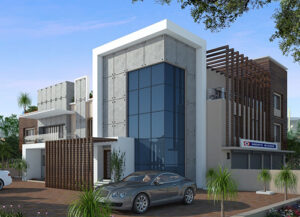
Role of Fenestration in Energy Conservation
The conventional building materials in India are largely thermally sound. It is through fenestration that one experience significant thermal heat gain and loss. Hence, use of the right materials of openings and optimised wall-window ratios are largely responsible for energy conservation in any building, observes Ar. Goswami.
Ar. Gupta and Ar. Kesavan points out that door and window materials are the root cause to help us maintain a comfortable environment inside, and hence less energy is utilised to do that. We need to approach the doors and windows as a thermal break between the outside and inside with the luxury of having the right kind of light infiltrate through them, hence glass and the kind of glass plays an important role in doing so.

Ar. Kaw and Subbaraman agree that the material of the door or window determines the insulation, acoustic quality of the space, airtightness, etc. Some of these factors allow better energy efficiency and in turn better energy conservation. Also, depending on the manufacturing process, the energy required for the manufacturing of the door window system is different. A lower embodied energy is always preferred while selecting the material.
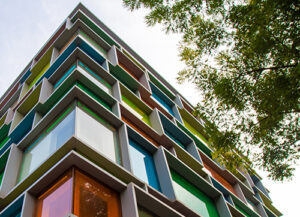
The energy loss through doors and windows constitute around 45% of the total energy loss in a building. Making use of energy efficient glazing can come in handy to decrease the carbon footprints produced.
Low-E glass is popularly used for window glazes as they provide maximum heat deflection and stops the heat from passing through the glass. The choice of glazing depends upon the right U-value, solar heat gain coefficient (SHGC), and light transmission, states Ar. Neogi. Ar. Pashine agrees with this. Tighter weather stripping, double or triple-paned glass panel, and improved core materials such as fiberglass and wood cladding are the most energy-efficient door materials currently available in the market, adds Ar. Pashine.
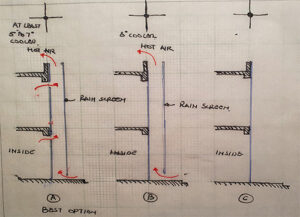
According to Ar. Kapur, the overall performance of a wall is three times better than a double-glazed glass with U values of 0.67W/Sq m.K and 1.8W/Sq m.K, respectively. Therefore, the overall system of fenestration becomes crucial to reduce heat ingress and improve energy performance.
Apart from a double-glazed performance glass, it is imperative to look at shading devices like louvers and fins, Jaali screens, and vision glass reduction by introducing insulated spandrels among many others. Aiming at these strategies through various technology-based simulations, one can reduce the envelope load to half, thereby making glass buildings’ energy performance up to 50% lower than standard green building benchmarks.
Ar. Kapur amplifies it with a project by Morphogenesis. A similar strategy has been implemented in an IT Campus in Gurgaon where full height fins are introduced along with spandrel incorporated curtain glazing sections that help reduce the building’s energy performance by up to 40% less than the GRIHA green building benchmark making it a platinum-rated building.
Performance Evaluation of Fenestration – Use of Tools and Technologies
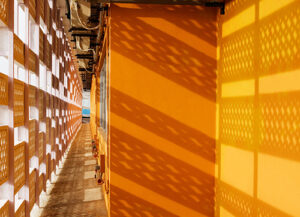
The right door is selected based on typology, foot traffic, fire rating, and thermal, air & acoustic performances, observe Ar. Neogi and Ar. Pashine. U-value and Solar Heat Gain Coefficient (SHGC) are the main energy-efficient door rating criteria. If the door or window does not leak the outside air inside, it is energy efficient. One should be careful of the negatively pressurised building as this makes the outside air rush inside leading to humidity in summers and cold drafts in winters. Incorporating vestibule design to swing doors and using thick paned glass & insulated frames for sliding doors can conserve energy. Casement doors are also better for soundproofing and effective in keeping interiors warm, points out Ar. Neogi.
As an architect and advisory in the field of fenestration, doors and windows play a critical role for us to conserve energy, the location of doors and the material choices for different doors to achieve a high efficiency is critical, observes Ar. Gupta. There are lots of software available for us to use to do a full energy modelling of the building envelope from the solid façade, windows, doors and roof. This helps us understand the complete working of the skin of a building and hence can be altered to help optimize, adds Ar. Gupta.
Software Commonly being Used to Check for the Optimal Performance Evaluation of the Buildings Include:
- Ecotect is a popular choice among architects and planners these days. It provides an accurate fenestration performance evaluation for the buildings designed.
- Another software is the H1 compliance calculator, which is more of a country-specific evaluator. We use this software at Studio Crypt for most of our New Zealand based projects. This software helps in monitoring important factors like Window to Wall Ratio (WWR), penetration of light into the spaces, and thermal heat gain & loss of the structure.
(Ar. Shivani Khanna, Partner & Principal Architect, Studio Crypt)
Selecting The Right Glazing
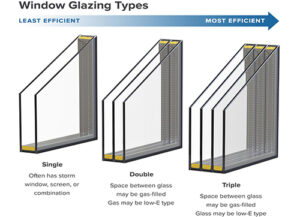
Glazing is that part of the skin of the building which allows certain elements of nature to come into the internal space, the key is to get in what you want and try to leave out what you don’t. Glass types are all driven from that, float glass, tinted glass, clear glass – and all of them can be installed as double glazing units. Float glass is the basic unit of glass, tinted glass is used to reflect some harsh sunlight, so the heat gain is minimised, clear glass is a float glass itself, but used to enhance the level of clarity from outside in, DGU or Double-Glass Units are a configuration of all or any to mitigate the acoustic mitigation and heat gain from the units.
According to Ar. Kesavan, double glazing, or rather triple glazing systems are the order of the day. The type of glass used on the exterior determines how much direct radiation has to be reflected. This exterior glass is often a performing glass with various levels of Oxide coating above the surface. Low E-glass of various options are available in the market and each of them has its respective levels of impact in energy conservation.

According to Ar. Kaw, the performance of any glass depends on factors like the Visible Light Transmission (VLT), Solar Heat gain coefficient (SHGC), etc. The ultimate aim is to achieve a lower SHGC along with the best VLT percentage for an optimum balance of heat gain and daylight. Ar. Neogi observes that with high thermal performance being the main concern, many people are now looking for double or triple paned glass windows.
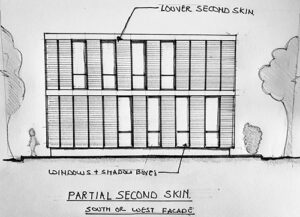
Double or triple-paned glass windows are connected by a spacer, effectively trapping the heat inside and not letting leaks in. Various typologies of Low-E glass are designed to allow high or low solar heat gain depending on the requirements. Tempered glass is another smart choice for windows. The rapid heating and cooling for its manufacturing make this glass about four times stronger than untreated glass.
According Ar. Khanna, a specific set of calculations are done to ascertain how the glazing used in the fenestrations will perform in the building. Some factors looked at are as follows:
- Thermal U-value
- Visible light transmission(VLT)
- Solar heat gain coefficient of the glazing unit (SHGC)
- High reflectivity in a glass is not desirable as it leads to urban heat phenomenon
- For an aesthetic value, the color tint of fenestration glass must also be taken into account.
Types of Glass for Best Performance

Energy-efficient glazings are used in buildings to achieve sustainable running costs. There are three types of high performance glasses:
The low-E glass allows light to pass through while keeping the heat away. These also help in the protection of the interiors from UV and IR rays. The low-E glass provides thermal comfort by keeping the warm air inside in winters and not letting cool air escape in summers.
Solar control glass is a special oxide-coated glass that transfers less heat and glare inside while allowing ample sunlight. These protect the interiors from IR rays while reducing the need for artificial lighting.
Solar control low-E glass block solar radiation while providing optimum thermal insulation without overheating or overcooling. Low-E glass solely tends to overheat under the direct solar glare, exactly where solar control low-E glass helps. These are used in glass façades to decrease the buildings’ air conditioning cost, resulting in high energy efficiency.
(Ar. Abhigyan Neogi, Founder & Principal Architect, Chromed Design Studio)
Key Factors to consider while Selecting Hardware for Doors & Windows

It is the hardware of the door that depicts how well it will function over time. The quality of the product ensures maintenance in the longrun. A quality product comes with a longer warranty as compared to the cheaper ones, ensuring long term investment, says Neogi. The selection also depends on the style of the door. Aesthetic requirements are always a priority, but it is also important to examine the locking mechanism before the purchase; for ease of use depending on the area the door needs to be located.
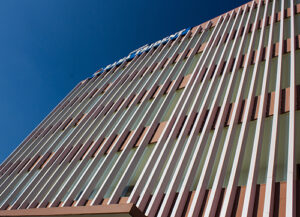
Another factor to be taken into account is the level of use. Commercial, residential and educational buildings have different levels of usage. Thus, the weight of the hardware selected depends upon the lifecycle and performance required. The type of facility the door is being used for must be scrutinised beforehand. Environmental factors also play a key role in the material and finish of door selection. For instance, a corrosion-resistant door works best in a humid climate. Hinges and rollers in closing doors and sliding doors are also prime for smooth functioning. The selection of such accessories defines the performance of the door.
According to Ar. Gupta, door hardware is an operation science, to begin with, the operation and access control of the building drive what hardware is applied to each door. In addition, life safety for exit egress also plays a major role in selecting hardware for the doors. The brand and the quality of the chosen hardware are the foremost factors to be considered as every brand ensures a specific level of confidence, comments Ar. Khanna.

Strength and durability are of utmost importance while selecting hardware for doors. The overall functionality of the door must be kept in mind to achieve a smooth functioning mechanism such that it is not cumbersome to operate. Security features are paramount, especially the lockable system of the doors. Last but not least is the aesthetics and the cost of the hardware which is prime for both, the architect and the client. According to Ar. Kaw, hardware selection should be done considering factors like the type of fenestration used, the weight of each operable element, appropriate location and size of the hardware, etc.
Long-lasting, solid finish, quality and type define the hardware, says Subbaraman. “Definitely material that has longer and better durability, which is superior in quality and type, that stands true to climatic course. Having said that, availability of the material is also something to be looked at while making doors and windows,” adds Subbaraman.

According to Mario, there should be a correct understanding between the buyer and the seller of the product. It’s not needed to select the highest specification for each demand. Key factors are the material the hardware is made of. “At coastal area, we need better corrosion resistance, so stainless steel is required. Considering the heat reduction/avoiding air leakages a multipoint lock will be needed. Also to achieve 100% rainwater tightness at the locking, the system should be suitable. The tested hardware solutions are also specified wind pressure/hurricane endurance.
The same counts for burglar proof/ resistance as well. Here also the classification of different impact test is there and the customer has the chance to select the right product available, based on the personal security demands.
Pros & Cons of Using Solar Controlled Glass & Self-Cleaning Glass
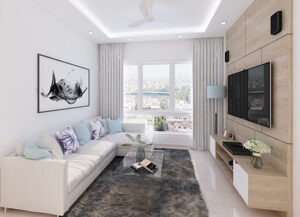
Solar control glass is a coating on glass to reduce the heat gain, as you have seen that heat gain is the biggest issues to manage the glare, it’s an effective way to strengthen the heat gain issue for any glazing type especially on the west and south direction, and especially in hot and arid regions. We do have to be conservative in using it as it can be a little cost prohibitive, says Ar. Gupta. Self -cleaning glass has the property to manage water better than the typical glass, it can wash the water of it without leaving a stain or a watermark, it also does justice to remove dust from it without cleaning it, it’s only used in the very unapproachable side of a façade and high-profile buildings as the cost can be an issue, adds Ar. Gupta.
According to Ar. Kesavan, Solar control glass is highly energy-efficient and reliable, but when it comes to internal reflections they transform to be a mirror at night, thereby blocking the exterior views. In some buildings, they even pose a threat as the internal space gets more claustrophobic at night due to high levels of reflective natured oxide coating used during manufacturing.
Ar. Kaw points out that the selection of solar controlled glass gives us the upper hand in controlling the indoor temperature with respect to the outdoor temperature, however it comes with a higher cost. Also, generally, the solar controlled glasses with lower U-value have a lower VLT, which means they allow less light in the indoor space.
According to Ar. Kaw, self-cleaning glass has hydrophobic or hydrophilic surfaces that clean itself by the virtue of the water droplets rolling down. The disadvantage of self-cleaning glass is that the contact angle and the roll-off angle must be as per the required values. Also, these glasses are expensive and are hazy.
Future Fenestration Technologies
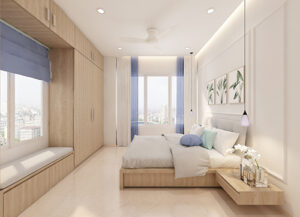
“We would be interested to see how newer technology for building fenestrations like photovoltaic glass will foray into the Indian market,” says Ar. Goswami. “We also hope for some more economical fenestration frames like aluminium frames used with thermal breaks. We look forward to cost-effective yet sleek fenestrations sections that are both lightweight and durable,” he adds. The future will see higher incorporation of smart technology and automation in the new-age high-rise buildings, for instance, touch solutions or the changing opacity of glass with nightfall, etc. will be the new ‘go-to’ trends in the upcoming times.
The consumers are looking for fenestrations that match the indoor aesthetics rather than just fulfilling functional requirements, observes Ar. Neogi. High-density fiber glass exterior and aluminium interior are becoming popular to achieve high performance in extreme climatic conditions. Vinyl, due to its energy efficient and easy-maintenance properties is also gaining popularity. Further, there might be a rise in the demand for larger, heavier windows and doors that would require sophisticated operating systems for ease of use while being visually unobtrusive. Energy efficiency and quality will come to play a significant role among the users. Glass featuring optimum U-values and thermal performances will see a rise in demand for various windows and doors.

Windows, doors, and skylights will be considered for passive fresh air ventilation and natural sunlight. There will be demand in automation systems allowing for the operation of doors and windows by voice control or sensory touch, predicts Ar. Neogi. Future fenestration technologies are quite diverse, we can see innovation in the field to make them with AI and change as the weather outside change, the needs inside changes. Besides, there will be a source of data that can be processed and used for further enhancing the systems. It can become like what skin is to humans where it starts feeling and reacting, the day is not so far for seeing these kinds of development.
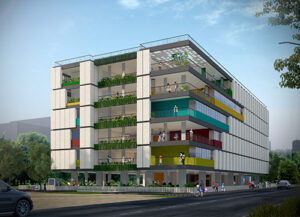
The pandemic has been a great learning for all designers; it has reinstated the importance of fresh air, natural ventilation, and distanced agile working in open areas. Although the introduction of more air change cycles and the enhanced introduction of fresh air with technologically advanced HEPA filters have been incorporated as part of the air conditioning strategies, we must ensure the building’s architecture and landscape allows for passive design solutions. In this respect, says Ar. Kapur, façade, being the interface between indoor and outdoor, occupies a unique position. The future of fenestration technology lies in flexibility, agility, and adaptability, states Ar. Kapur.
There is high stress on creating multifunctional outdoor spaces in all buildings and landscape areas that can be converted to outdoor balconies and habitable indoor spaces like meeting rooms, virtual conference rooms and breakout spaces for individual working. This has given rise to modular and convertible (sliding folding glass and louvered panels) façade systems. A trend of modular automated glass boxes converted from open spaces to meeting pods in landscape design has also been seen.
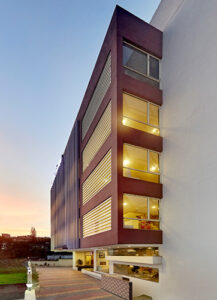
Morphogenesis is currently working on a school in Vijayawada that has all multifunctional spaces such as dance halls, art, craft workshop, etc. in open verandas. These spaces have convertible sliding folding partitions on the façade that can be transformed into rooms for formal gatherings. So, there is a shift in façade design technology, and we will see more of it in the future, adds Ar. Kapur, taking her project as an example. According to Ar. Pashine, a high-density fiberglass exterior and aluminium interior are fast becoming popular to achieve high performance for buildings. Vinyl is also being considered due to its energy-efficient and easy maintenance properties.
Glazing with optimum thermal U-values and heat gain/heat loss properties will be high in demand, providing ample windows, doors, and skylights will be considered for passive fresh air ventilation and natural sunlight and overall health of the interior atmosphere. Home automation systems such as sensory touch allowing for the operation of doors and windows will be introduced in the market.
According to Subbaraman, buyers now look for homes that have more natural daylight flow. While this can be achieved with long and broader windows, it also drives up the cost. The fenestration technology has helped in gaining these requirements with the use of smart and efficient material. Earlier it was only one type of window available that is your metal frame windows, but now right from glass, wooden, vinyl and maybe more type of materials are there in the market to achieve that look, safety and comfort factor in your home. No doubt technology has a lot more to offer us in terms of environment friendliness and durability since that is the trend and need of the hour.
CONCLUSION
The fenestration industry has been focused on energy savings and building performance. Manufacturers, architects and specifiers, owners and developers are learning more about performance and taking initiative to focus on conserving energy, thus moving toward green products types. Fenestration technology and performance are ideally placed to match the higher expectations of both building users and standard setting bodies. But still, many architects still remain uninformed on many traits including the design tools, standards and ne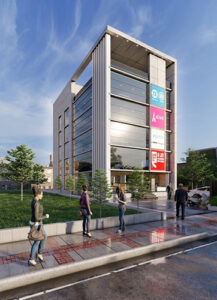
Fenestration technical experts recommend developing a “blended specification” that identifies key performance criteria for structural performance and energy transfer. Today’s fenestration can match any U-value, sound reduction and shading requirement by changing components within the fenestration system, be it the frame design, the glass type, or the double-glazing spacer bar, even the change of secondary sealant within a double glazing unit will make a difference!
